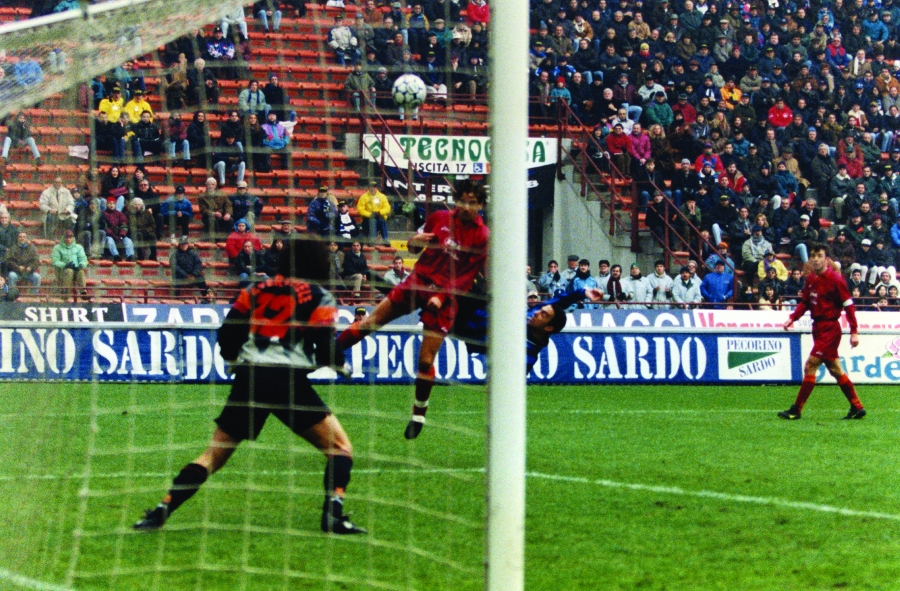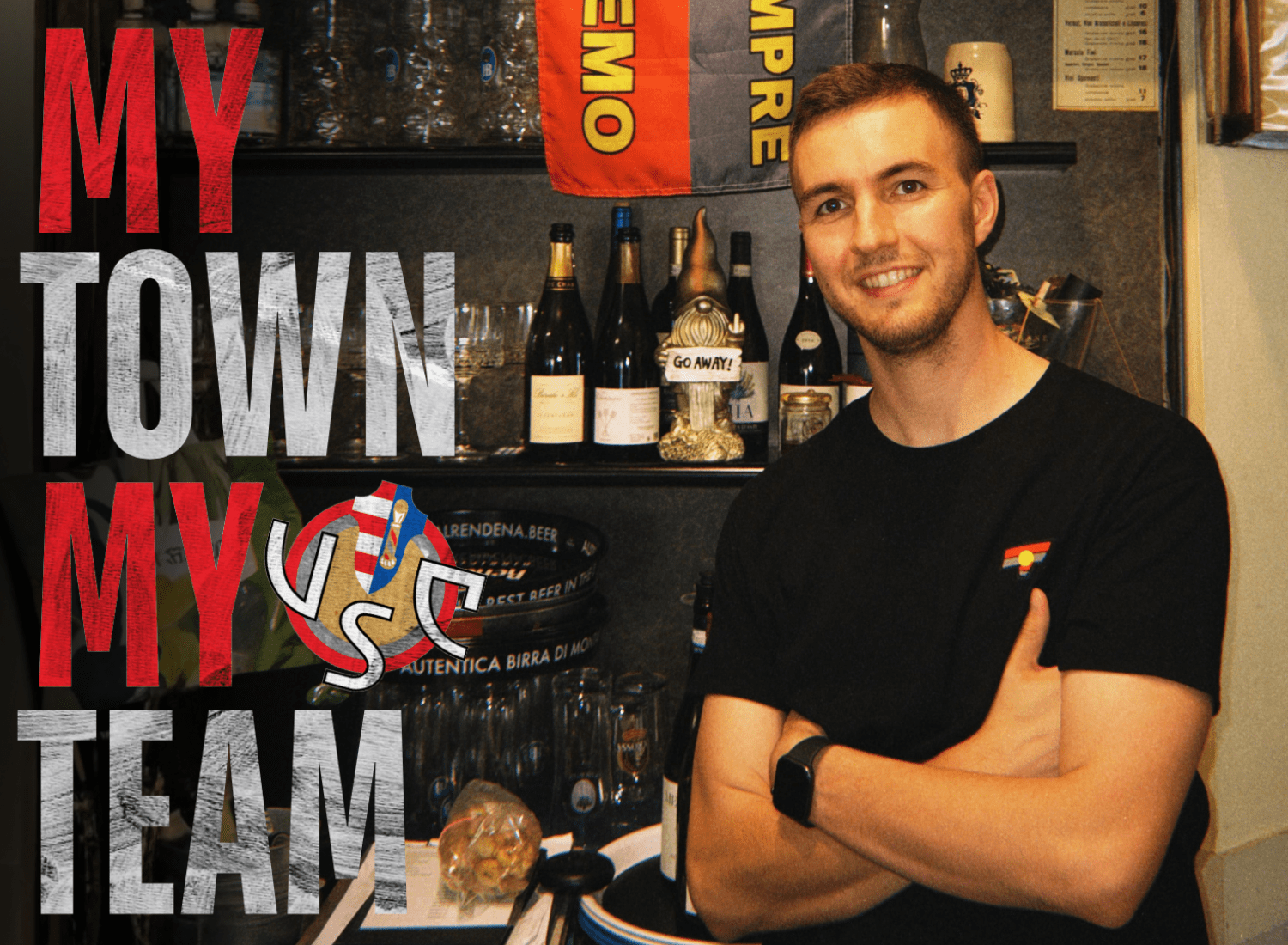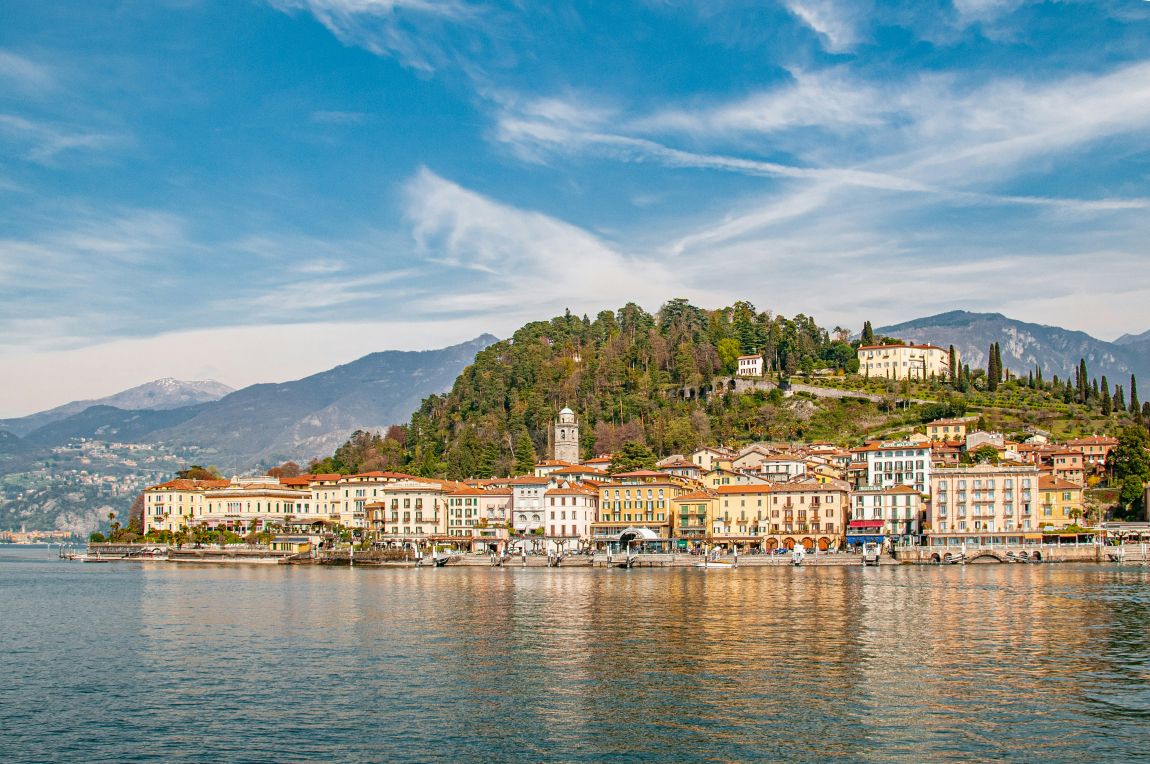
Golazzo: Youri Djorkaeff, Inter Milan vs. Roma, 1997
By Emmet Gates
When the name Youri Djorkaeff pops up, usually one image comes to mind.
And it’s not of him in a Bolton shirt strutting his stuff around the Reebok Stadium at the tail-end of his career.
No, the visual that springs forth is the elegant Frenchman in mid-air, contorting his body like a gymnast at the Olympics, executing one of the most perfect bicycle kicks in the history of the game against Roma in January 1997.
It was the finest goal of Djorkaeff’s career and, in a fixture littered with ridiculous goals, this one stands near the top.
Djorkaeff was in his first season with Inter following his arrival from Paris Saint-Germain in the summer of 1996.
Usually a 10 on the pitch, Djorkaeff was forced to wear the No 6 for Inter, a consequence of Benito Carbone refusing to hand over the much-coveted number.
A player with vision and elegance, such was his ability to wriggle past players at will he was dubbed ‘The Snake’.
The Frenchman was a gifted operator and could take up myriad roles in midfield, from behind the strikers to a more deep-lying role or even purely as box-to-box, despite not being the most physical of players.
Also nicknamed ‘The Little Mozart’ very early in his career, Djorkaeff confessed to the hatred of being confined to one area of the pitch. “To make a difference you always have to be on the move,” he said.
Roy Hodgson was in his second season as Nerazzurri coach and Djorkaeff was to be the creator-in-chief for Inter in behind Maurizio Ganz and Ivan Zamorano, another summer signing.
Inter were only a year into Massimo Moratti’s presidency, but already mistakes were being made. Roberto Carlos was infamously sent away by Hodgson and Moratti because the English coach believed Carlos couldn’t defend.
Yet Moratti was slowly building the squad that would go on to challenge Juventus for the Scudetto in 1997-98.
Of course, the star of that season for Inter was Ronaldo. But if that season was all about El Fenomeno, the one before was all about Djorkaeff. Yet not at first.
Inter had started the season brightly but five games undefeated ended with a 2-0 loss to Juve in the first Derby d’Italia of the season in late October.
Following a narrow 1-0 away win at Verona in early November, they wouldn’t pick up another victory for the remainder of the year, and as Serie A resumed from its annual winter break, Hodgson knew he needed a win.
Moreover, following a defeat to Sampdoria in a cracking 4-3 encounter at San Siro and a stale 1-1 draw with lowly Reggiana just before Christmas, Djorkaeff implored Hodgson to play him behind the strikers rather than shoehorning him on the left-hand side of a midfield four.
Owing to his more defensive nature, Hodgson was reluctant but eventually relented.

First up was Roma in the first fixture of the new year and Djorkaeff, now in his favoured position, was no doubt hoping to add to the six goals he’d already scored for his new side.
Roma were in a bit of an odd place in the mid-90s. Of the fabled ‘sorelle sette’ (seven sisters) who were supposedly in the race to win the Scudetto every year during the 1990s, the Giallorossi were always the club with the smallest chance. Moreover, they’d never looked close until the arrival of Fabio Capello.
Under the guise of Carlos Bianchi, Roma were enduring a tough campaign and found themselves just inside the top half of the table.
Moreover, Bianchi had an open disdain for a very precocious attacker called Francesco Totti, to the point where Bianchi tried to offload him in the winter window. Whatever became of him?
That being said, Bianchi gave a then-20-year-old Totti a rare start for Roma. With future title winner Marco Delvecchio also leading the line.
Inter raced into an early lead through Ganz, who got the slightest of touches to Javier Zanetti’s through ball.
Ganz, a 90’s calcio cult hero, produced the best season of his career in 1996-97, scoring 20 goals in all competitions, with 11 of them coming in Serie A. This was his third.
Roma tried to force themselves back into the game, but with top scorer Abel Balbo only fit enough for the bench, the away side lacked teeth in attack.
Inter were clearly the superior side in the opening half an hour, and Djorkaeff was now finding pockets of space, setting up Aron Winter for a shot that was well saved by Giorgio Sterchele.
Inter kept attacking, and the goal of the game — and the season — arrived on the back of this momentum.
Salvatore Fresi, standing in the centre of the field, hooked the ball high over his head and towards the Roma goal. Zamorano challenged for the ball along with Roma’s Aldair, but the Brazilian won the duel.
Yet Aldair’s header inadvertently landed at the feet of Ganz. The Italian was on the right-hand side of the Roma half and now ran at their beleaguered back line.
Ganz’s dipping shot was saved by the leg of Sterchele. The ball fell to defender Fabio Petruzzi, who made a hash of the attempted clearance, firing the ball upwards into the Milanese sky.
Djorkaeff had ghosted into the box as Ganz prepared to shoot, and Petruzzi’s wayward hack of the ball meant it was dropping from the heavens in his direction, and a decision was made.
He steadied himself and, as Petruzzi closed in, Djorkaeff contorted his body to execute the most exquisite of bicycle kicks. The connection was perfect as the ball flew into the opposite corner of Sterchele’s net.
Everything about the goal was as close to footballing nirvana as it gets: the way in which Djorkaeff angled his body, the connection with the ball, how it arched into the opposite corner. Even Djorkaeff’s legs appear to coil around Petruzzi’s upon striking the ball, perhaps a nod to his nickname.
If Djorkaeff was being judged at a hypothetical bicycle kick Olympics, he would’ve got full 10s across the board.
It was, and remains, one of the best bicycle kicks in Serie A history, and arguably a top 20 entry no matter the category. So instantly iconic did the visual become that the image of Djorkaeff mid-contortion was imprinted on the club’s season tickets the following year.
According to Djorkaeff, when he returned to Italy sometime after leaving Inter, he didn’t show his passport at the airport but the season ticket, and was let through.
Moratti, who’d always had a love for creative talent, wanted to go even further: “He [Moratti] wanted to make a statue of it,” said Djorkaeff about the goal in 2023. “But San Siro doesn’t belong to Inter.”

Even the referee for the game, Graziano Cesari, broke the usual player-official etiquette by complimenting the Frenchman on his moment of genius.
“It was the best goal of my career,” Djorkaeff has admitted over the years. “But it doesn’t belong to me, it belongs to all Interisti.”
Djorkaeff’s magnum opus essentially overshadowed the rest of the game, with most not knowing the full-time score (Inter went on to win 3-1). The game won’t live long in the memory, but the second goal of the afternoon certainly will.
Unfortunately for Djorkaeff, his reputation has suffered due to his peak coinciding with Zinedine Zidane’s. Both were viewed in France as the new guard for Les Bleus by the mid-90s, replacing Jean-Pierre Papin, Eric Cantona and David Ginola in light of the country’s colossal failure to qualify for USA ’94.
Coincidentally, Djorkaeff and Zidane arrived in Serie A in the same summer, and the former even had the higher profile, but it was soon clear the latter was a notch above.
Both operated behind Stephane Guivarc’h at France ’98, but it was Zidane everyone remembers from the tournament.
Zidane being just, well, Zidane, ultimately obscured just what a talent Djorkaeff was. While Zizou was a pure 10, Djorkaeff, by his own admission, was a nine-and-a-half, an attacking midfielder capable of creating goals but also racking up double digits in a season.
He would later go on to win the 1998 UEFA Cup with Inter, but it was the first season the real Djorkaeff flourished, finishing with 17 goals in all competitions.
“It’s worth struggling and running the risks, but Djorkaeff must play in that position,” said captain Beppe Bergomi after the Roma game. “He must be free to do what he wants,”echoed Fresi.
Hodgson, wisely, listened.
Related Articles
Related Articles
We get a local take on what's hot in Cremona - where to eat and drink, sights to see and handy hints that might not be in the tourist guides.
The Artemio Franchi will always be the main reason calcio fans head to Florence but there is one other thing that must be on the to-do list.
After the final whistle is blown at Stadio Giuseppe Sinigaglia, there is no better place to unwind than Bellagio.




